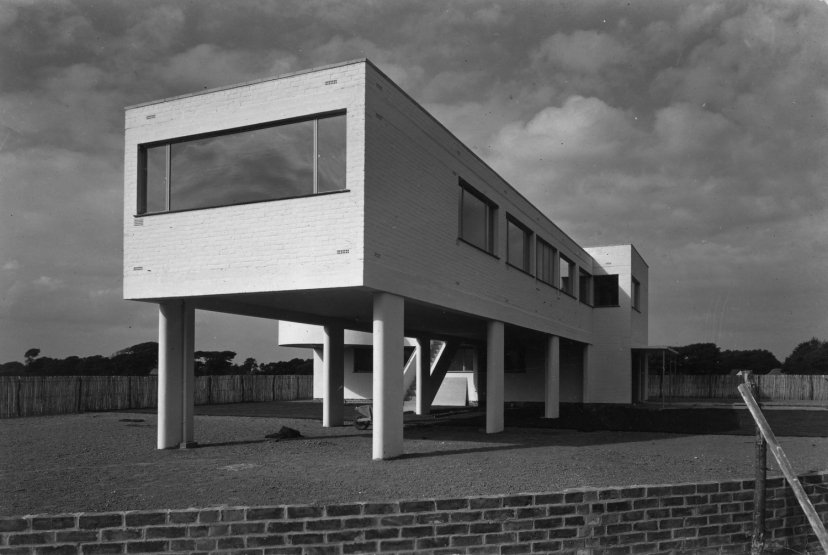Understanding Pier Foundation: Design, Types, and Construction

A pier foundation is one of the most reliable foundation systems, commonly used for both residential and commercial structures. Whether you’re building a home or an industrial facility, understanding the essentials of pier foundations can help ensure a strong, durable structure. In this article, we will explore what pier foundations are, their types, design principles, and their benefits compared to pile foundations.
Also Read:- Finding Top Architects in Bangalore: Costs, Recommendations, and Hiring Tips
What is a Pier Foundation?
A pier foundation is a type of deep foundation used to support heavy loads. The primary function of a pier is to transfer the weight of a structure into the soil or bedrock beneath it. Typically, pier foundations are used in areas where the topsoil is unstable or when the building needs to be elevated above ground level.
What is a pier foundation also called? It’s sometimes referred to as a post or column foundation due to its design, which includes cylindrical columns that provide support by reaching deep into the ground.
Pier Foundation vs Pile Foundation: Key Differences
While both pier foundations and pile foundations serve similar purposes, there are distinct differences between the two. Pier foundations are typically used in smaller structures like houses or light buildings, while pile foundations are used for much heavier constructions, such as bridges and high-rise buildings.
- Pier Foundation Types: There are several types of pier foundations, including drilled piers and masonry piers. Drilled piers are commonly used in construction as they offer a stable and strong foundation for heavier loads.
- Pier Foundation Diagram: In construction plans, pier foundations are often shown as a network of cylindrical supports that distribute the load to stable soil or bedrock. Diagrams also detail the depth, material, and spacing of the piers.
What is a Pier in Foundation?
In foundation construction, a pier refers to a vertical column that supports a load from above. Piers are essential in areas with unstable soil, as they provide a stable base by transferring the load to a deeper, more stable layer of earth. Pier foundations are especially beneficial in areas prone to soil movement or flooding, as they elevate the structure above ground level.
What is a Pier Used For?
A pier is used to support structures and prevent them from sinking into soft or unstable soil. It’s also useful for elevating structures, such as in flood-prone areas or on sloped land. Pier foundations ensure long-term stability and prevent differential settling, which can damage buildings over time.
Pier Foundation Construction
Pier foundation construction involves drilling or excavating cylindrical shafts into the ground, which are then filled with concrete or masonry. The depth and diameter of the piers depend on the load of the building and the condition of the soil. Construction typically follows these steps:
- Site preparation: The construction site is cleared, and the locations of the piers are marked according to the foundation design.
- Drilling/Excavation: Cylindrical holes are drilled to the required depth, ensuring that they reach stable soil or bedrock.
- Reinforcement and Filling: Steel reinforcement bars are placed in the drilled holes, followed by pouring concrete to form the pier columns.
- Curing: The concrete is left to cure, ensuring maximum strength before the next steps of construction.
Pier foundation design must take into account factors like soil type, load-bearing capacity, and environmental conditions. Proper design ensures that the foundation can withstand the weight of the structure without settling or shifting over time.
Pier Foundation Detail and Cost
The details of a pier foundation can vary depending on the type of structure being built. Residential homes typically use smaller, shallower piers, while industrial buildings require larger and deeper piers. Pier foundation cost varies depending on factors like material, labor, depth, and the number of piers required. On average, the cost can range from $8,000 to $25,000 for residential structures, depending on the complexity of the project.
Pier Foundation Types: Which One is Right for Your Project?
There are two main types of pier foundations:
- Drilled Piers: These are created by drilling a hole into the ground and filling it with concrete. They are often reinforced with steel bars to provide additional strength. Drilled piers are suitable for larger structures and can handle significant loads.
- Masonry Piers: These are constructed using brick or stone and are usually employed for lighter structures. They are not as deep as drilled piers and are best suited for smaller residential buildings.
Choosing the right pier foundation type depends on the soil conditions and the load requirements of your project. A professional engineer can help determine the best option for your structure.
Pier Foundation vs Pile Foundation: A Closer Look
The main difference between a pier foundation and a pile foundation lies in the method of installation and the type of load they can support. Pile foundations are driven deep into the ground, often using heavy machinery, and are used for large-scale commercial projects. Pier foundations, on the other hand, are drilled and do not require as much machinery. They are a more economical option for smaller structures and areas with stable soil.
Pier Foundation House: Benefits and Applications
A pier foundation house is a home that is elevated above the ground, typically on columns or piers. This type of foundation is particularly useful in areas prone to flooding or on uneven terrain. Some of the benefits of using a pier foundation for a house include:
- Flood protection: Raising the house above the ground protects it from water damage in flood-prone areas.
- Better ventilation: The space beneath the house allows for better air circulation, reducing the risk of moisture buildup and mold.
- Cost-effective: Pier foundations can be more affordable than traditional slab foundations, particularly in areas where extensive excavation would be required.
FAQs About Pier Foundation
Q: What is the difference between a pier foundation and a pile foundation?
A: Pier foundations are typically used for smaller structures, while pile foundations are used for large, heavy structures. Piers are drilled, while piles are driven into the ground.
Q: What is a pier used for in construction?
A: A pier is used to support structures and distribute their weight to deeper, more stable soil or bedrock.
Q: What is a pier foundation also called?
A: It is also referred to as a post or column foundation.
Q: How much does a pier foundation cost?
A: The cost can range from $8,000 to $25,000, depending on the size and complexity of the project.
Q: How is a pier foundation constructed?
A: Pier foundation construction involves drilling holes into the ground, reinforcing them with steel, and filling them with concrete to form support columns.
Conclusion
Pier foundations are an effective and economical choice for many construction projects, offering stability in areas with poor soil conditions or flood risks. By understanding the differences between pier and pile foundations, the construction process, and the benefits of using piers for residential and light commercial buildings, you can make informed decisions about your next construction project.





